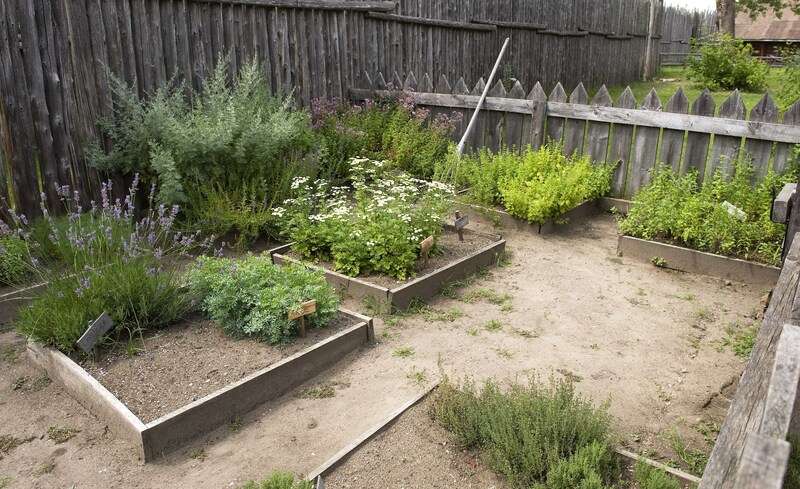Mastering the Art of Hedge Sculpting
Posted on 18/06/2025
Hedge sculpting--also known as topiary--transforms ordinary green hedges into stunning garden masterpieces. From stately geometric shapes to whimsical animal figures, sculpted hedging elevates any landscape, blending botany and artistry. If you aspire to become adept at hedge sculpture, this comprehensive guide will help you master the art of hedge sculpting and create living works of art in your own garden.
Understanding Hedge Sculpting: The Basics
What is Hedge Sculpting?
Hedge sculpting refers to the careful trimming and shaping of shrubs and hedges into intricate designs and forms. While traditional hedges serve as privacy screens or boundaries, hedge sculpture goes many steps further, demanding creativity, keen attention, and proper technique.
Over centuries, topiary art has flourished in grand European gardens and modern urban landscapes alike. The process draws on horticultural expertise and imaginative vision, allowing gardeners to shape hedges into:
- Geometric shapes (spheres, obelisks, cubes, pyramids)
- Animals and birds (peacocks, elephants, rabbits)
- Mythical creatures and abstract motifs
- Living sculptures spelling out words or initials
History of Topiary and Hedge Sculpting
The roots of topiary date back to ancient Rome, but its height came with the Renaissance and Baroque styles of French and Italian gardens. Famous formal gardens, such as those at Versailles and Hampton Court, showcase astounding hedge sculptures that have inspired generations of landscape designers. Today, this living art form is experiencing a revival, thanks to renewed interest in ornamental gardening.

Benefits of Hedge Sculpting
- Visual Appeal: Adds elegance, drama, and unique character to any outdoor space.
- Creative Expression: Offers an artistic outlet for gardeners of all skill levels.
- Wildlife Shelter: Provides birds and insects with shelter and food sources.
- Increases Property Value: Well-maintained sculpted hedges can boost curb appeal and market value.
- Privacy & Windbreaks: Maintains the functional benefits of traditional hedging.
Choosing the Right Plants for Hedge Sculpting
Mastering the art of sculpting hedges starts with choosing suitable species. Not all shrubs lend themselves well to shaping. Topiary-friendly plants must produce dense foliage and thrive with frequent pruning.
Top Hedge Species for Sculpting
- Buxus sempervirens (Boxwood): Classic and widely used, boxwood grows slowly, forms dense greenery, and tolerates repeated trimming.
- Taxus baccata (Yew): Deep green, tough, and highly shapeable, yew works well for formal topiary and large figures.
- Ilex crenata (Japanese Holly): A flexible alternative to boxwood, ideal for shady areas and fine details.
- Ligustrum (Privet): Fast-growing and quick to recover from pruning, privet is great for showy, large-scale pieces.
- Laurus nobilis (Bay Laurel): Scented, glossy foliage and an upright habit make bay laurel a favorite for Mediterranean-themed gardens.
- Euonymus japonicus: Hardy, tolerant of various conditions, and available in variegated forms for visual interest.
Factors to Consider
- Climate Adaptability: Choose species suited to your local weather and soil.
- Growth Rate: Faster-growing species require more frequent attention but fill in shapes quickly.
- Disease Resistance: Opt for robust, pest-resistant varieties to avoid common hedge problems.
Essential Tools for Hedge Sculpting
To ensure your hedge sculptures turn out sharp and professional, invest in these essential tools:
- Shears: Long-bladed hedge shears for large cuts and shaping.
- Secateurs: Sharp hand pruners for precision trimming of smaller branches and fine details.
- Topiary frames: Wire forms help you maintain the intended shape, particularly for beginners or elaborate designs.
- String and stakes: Useful for marking straight lines, grids, or central axes.
- Electric trimmers: Time-saving for large hedges, but use with care for final shaping.
- Protective gear: Gloves, goggles, and durable clothing to safeguard against thorns and debris.
Tip: Always keep your blades sharp and clean--precise cuts heal faster and promote denser, healthier growth.
Step-by-Step: Mastering the Hedge Sculpting Process
1. Planning Your Design
- Decide on your desired shape--start simple if you're a beginner (spheres, cubes, cones).
- Draw your design to scale or find reference images.
- For complex shapes, consider using topiary frames or templates.
- Assess sunlight orientation and space--factor in future growth.
2. Preparing the Hedge
- Inspect: Check for dead, damaged, or diseased branches and prune them away.
- Weed & Mulch: Remove weeds around the base and add mulch to retain moisture.
- Water: Ensure the hedge is well-watered prior to major shaping.
3. Shaping the Outline
- Start by outlining the broad shape with shears, removing only a little at a time.
- Work from the top down and from the sides inward.
- Use stakes, strings, or frames as guides if needed.
- Step back regularly--viewing from different angles ensures symmetry and proportion.
4. Refining the Details
- Switch to secateurs or small shears for finer details and internal contours.
- Remove small amounts with each snip; patience yields the best results.
- For animal or character shapes, refine features like ears, tails, or facial elements slowly and precisely.
5. Finishing Touches and Cleanup
- Rake away cuttings to prevent disease and pest problems.
- Touch up uneven spots after stepping back and checking in natural light.
- Clean and oil tools for longevity.
Maintenance: Keeping Sculpted Hedges Healthy and Attractive
To master the art of hedge sculpting, ongoing care is essential. Well-maintained sculptures remain lush, healthy, and eye-catching year after year.
Pruning Frequency
- Most hedge species benefit from 2-4 trimmings per year.
- Fast growers (like privet) may require monthly attention during the growing season.
- For intricate designs, trim little and often to maintain definition without stressing the plant.
Fertilizing and Watering
- Feed sculpted hedges with balanced fertilizer in spring and midsummer.
- Water deeply in dry spells but avoid waterlog.
- Mulch annually to conserve moisture and suppress weeds.
Dealing with Pests and Diseases
- Monitor for common pests such as box caterpillar, aphids, and scale insects.
- Remove diseased sections promptly to prevent spread.
- Promote air circulation by avoiding overly dense growth.
Advanced Techniques in Hedge Sculpting
Creative Topiary Shapes
- Standard Balls and Cones: Perfect symmetry can be perfected with practice and guides.
- Spirals: Spiral forms require patience--mark the spiral twisting up the stem with string before cutting.
- Tiered Shapes: Multiple levels or tiers add dimension and visual intrigue.
- Intricate Figures: For animals or abstract shapes, start with a simplified outline and increase complexity each year as the plant matures.
Clipping Living Fences and Mazes
Creating garden mazes or living trellises pushes the boundaries of hedge artistry. Plan carefully, and maintain walkways and interior designs for the best impact.
Espalier and Pleaching
- Espalier: Training shrubs or small trees against flat surfaces to form living walls or decorative patterns.
- Pleaching: Intertwining living branches from multiple plants to create elaborate raised hedges or arches.
Common Mistakes and How to Avoid Them
Even seasoned gardeners face challenges in their hedge sculpting journey. Keep these mistakes in mind:
- Overcutting: Removing too much foliage at once can stress or kill the plant.
- Neglecting shape: Without a clear plan and regular trimming, hedges quickly lose their intended form.
- Using blunt tools: Dull blades tear rather than cut, leading to jagged wounds and increased disease risk.
- Poor timing: Pruning in extreme heat or during frost can damage plants. Always trim in mild, dry conditions.
- Ignoring pests: Neglected hedge sculptures often fall victim to infestations that are harder to control once established.
Inspiration: Iconic Hedge Sculptures Around the World
- Levens Hall, England: Home to the world's oldest topiary gardens, with whimsical geometric and animal forms.
- Versailles, France: Legendary for grand, formal hedge artistry and sprawling garden mazes.
- Green Animals Topiary Garden, USA: Over 80 sculpted figures, including elephants, giraffes, and birds.
Traveling or browsing images from these locations can provide inspiration and practical ideas for your own landscape.

Tips for Beginners: Starting Your Hedge Sculpting Journey
- Begin Small: Practice on a simple shape (ball, cube) until you are comfortable.
- Experiment: Try different plant species and shaping techniques to discover what you enjoy most.
- Stay Patient: Topiary is a gradual art--shapes become more impressive as the plant matures.
- Learn Continuously: Follow expert blogs, watch tutorials, and tour gardens to improve your skills.
- Join a Community: Local gardening groups or online forums offer support and valuable advice.
Conclusion: Transform Your Landscape with Hedge Sculpting Mastery
Whether you dream of a classical knot garden or playful animal topiaries, mastering hedge sculpting is a rewarding pursuit. It combines horticultural know-how with creative vision, yielding living sculptures that change and grow with time. Start with the right plants, use quality tools, plan your designs carefully, and maintain your hedges thoughtfully. As your skills progress, your unique green masterpieces will become the pride of your garden and a testament to your artistry.
Embrace the art of hedge sculpting and create your own garden legacy--one trim at a time!



